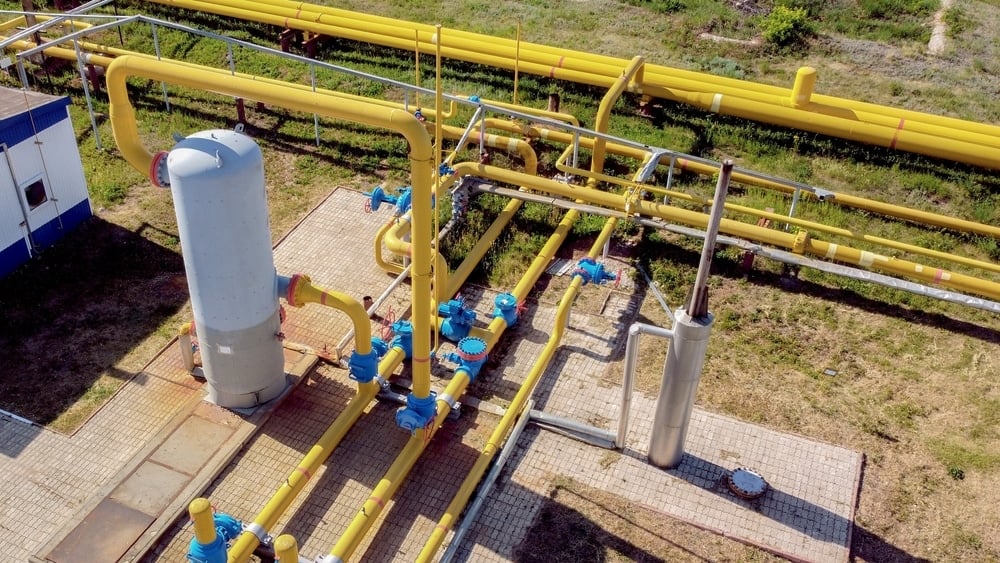
EU Traders Store Gas in Ukraine Amid Geopolitical Tensions
In recent years, the European energy landscape has been marked by a growing emphasis on gas storage as a critical component of energy security and market stability. The continent’s dependence on gas imports, coupled with geopolitical uncertainties, has spurred the need for strategic gas storage facilities.
This article examines the dynamics of European gas storage under current conditions. We analyse how European nations are leveraging gas storage as a means to enhance energy security, enable effective gas trading, and compare gas prices for increased market efficiency.
Gas Storage: Safeguarding Energy Security
European nations have long recognised the importance of maintaining robust gas storage facilities to ensure a stable energy supply. The fluctuating nature of gas demand, coupled with unforeseen geopolitical disruptions, underscores the necessity of adequate EU gas reserves. Ukraine’s strategic position as both a transit route for Russian gas and a storage hub exemplifies this urgency.
Presently, the gas market exhibits distinct pricing discrepancies that render storage ventures in Ukraine economically attractive. The cost for gas delivery scheduled for September stands at 30 euros ($32.96) per megawatt-hour (MWh). In contrast, the forward prices for the Q1 of 2024 are marked at 49 euros, a considerable difference. This variance in pricing is gleaned from the TTF Dutch gas futures market. The difference shows the financial incentives for traders to secure gas now and store it for subsequent delivery.
Traders have emphasised the strategic rationale behind gas storage operations in Ukraine, in addition to utilising storage facilities within the European Union. This approach capitalises on the current favourable pricing dynamics as compared to the projected costs for future deliveries, representing a commercially sound strategy.
Trade Gas and the Role of Storage
Gas storage operations in Ukraine boast the flexibility of being sourced and transported from various points across Europe. This includes the use of pipelines from Hungary, Poland, and Slovakia, with gas transported either through physical or virtual flows. Nominations for the pipeline that facilitates the transport of Russian gas from Ukraine to Slovakia at the Velke Kapusany border have notably increased. These augmented nominations, referred to as virtual reverse flows, have peaked at 10 million cubic meters (mcm) per day since July, illustrating the growing utilisation of the cross-border infrastructure.
The practice of gas trading within the European Union has been greatly facilitated by the presence of extensive gas storage infrastructure. Slovakia’s state-owned energy provider, SPP, which predominantly serves the Slovak market and relies on Russian gas, is contemplating the utilisation of Ukrainian storage facilities. The impetus behind this consideration arises from the fact that existing storage in Slovakia is already at 90% capacity. This decision is guided by a pragmatic assessment of available storage resources and market dynamics.
However, European traders acknowledge the existence of associated risks stemming from geopolitical uncertainties. The possibility of military actions and apprehensions about the continuity of gas transmission in the event of a halt in Russian gas exports via Ukraine loom large. While traders acknowledge these risks, they are also exploring alternative supply routes and storage options to diversify their sources and minimise potential disruptions.
Comparing Gas Prices: The Efficiency Factor
One of the key benefits of an interconnected and well-integrated European gas market is the ability to compare gas prices across regions. This practice becomes particularly relevant in times of geopolitical tension or supply disruptions. The availability of ample gas storage enables countries to bridge short-term gaps in supply by tapping into stored reserves or importing gas from neighbouring nations. The ability to swiftly compare gas prices and make informed decisions not only stabilises the market but also prevents price manipulations that could arise in times of uncertainty.
Moreover, physical gas flows originating from Slovakia to Ukraine have commenced as well. These flows have been established through the Budince entry point, with daily volumes averaging around 17 mcm. This development indicates the practical implementation of cross-border gas transfers, adding another layer of complexity to the evolving dynamics of gas distribution and storage in the region.
Navigating European Gas Storage: Balancing Incentives, Dynamics
The decision by traders to engage in gas storage operations in Ukraine alongside utilising EU-based facilities underscores the interplay between commercial incentives, market dynamics, and geopolitical considerations. While the allure of more favourable pricing for future deliveries serves as a primary driver, the risks associated with political turmoil and supply disruptions necessitate a diversified and strategic approach.
The ongoing adjustments in gas nominations and physical flows further illustrate the dynamic nature of gas trade and storage mechanisms, marking a pivotal period in shaping the energy landscape of Europe.
The strategic significance of European gas storage cannot be understated. The ongoing utilisation of Ukraine’s storage capacities in the face of heightened war risks exemplifies the commitment to maintaining energy security through EU gas reserves. The symbiotic relationship between trade gas and gas storage underlines the market-driven approach to managing gas supply and demand. Furthermore, the ability to swiftly compare gas prices and adjust supply routes mitigates the potential impact of geopolitical disruptions on market stability.
As Europe continues to navigate the complex energy landscape, investments in gas storage will remain integral to safeguarding energy security, enhancing market efficiency, and enabling resilient gas trading.



